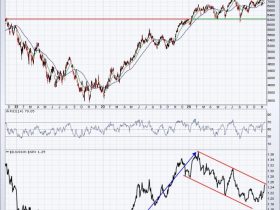Breadth Divergences: Understanding Their Impact on Market Trends
Market analysis often involves tracking a wide range of indicators to provide insights into the underlying health and direction of financial markets. One such indicator that has gained significant attention among analysts is breadth divergence, which can offer valuable clues about potential shifts in market trends.
In essence, breadth divergence refers to a situation where the number of advancing stocks is not in sync with the overall market index. This phenomenon can occur during both bullish and bearish market phases, providing analysts with important signals to anticipate potential changes in market momentum.
During a bullish trend, for example, a breadth divergence may indicate underlying weakness despite the overall index showing positive momentum. This can be a warning sign for investors, suggesting that the market’s advance is being driven by a narrowing group of stocks rather than broad-based strength. In such cases, the risk of a market reversal or correction may be heightened.
Conversely, in a bearish trend, a breadth divergence can signal potential opportunities for a market upturn. When a market index is trending downwards, but a growing number of stocks are showing signs of strength, it could indicate that the market is oversold and ripe for a reversal. This divergence between the index’s performance and the underlying breadth of individual stocks can be a positive signal for investors looking for potential entry points.
To effectively interpret breadth divergences, analysts often employ technical analysis tools such as relative strength indicators, moving averages, and volume analysis. These tools help identify patterns and trends in stock performance that may not be immediately apparent when looking solely at the market index.
It is important to note that breadth divergences should not be used in isolation but rather as part of a comprehensive market analysis strategy. By combining breadth divergences with other indicators and fundamental analysis, investors can gain a more holistic view of the market’s direction and make more informed investment decisions.
In conclusion, breadth divergences play a crucial role in providing insights into market trends and potential turning points. By understanding and monitoring these divergences closely, investors can better navigate the complexities of financial markets and position themselves strategically to capitalize on emerging opportunities.











